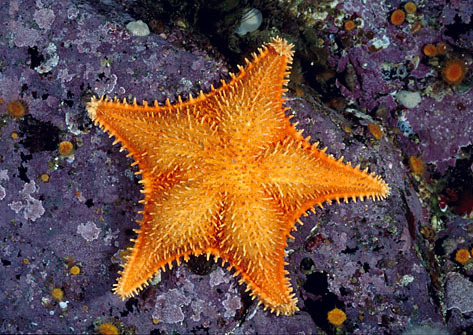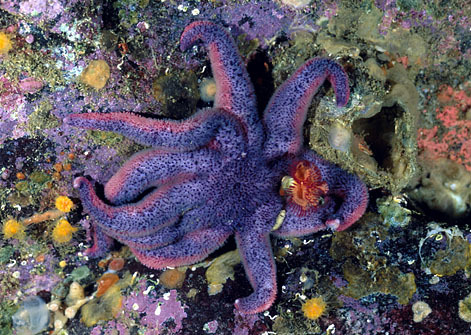#nectria
Text




Sea stars by David Hall
Top left: Ocellate sea star (Nectria ocellata)
Top right: Spiny sea star (Hippasteria spinosa)
Bottom left: Stimpson's sun star (Solaster stimpsoni)
Bottom right: Ochre sea stars (Pisaster ochraceous)
#sea stars#starfish#nectria#nectria ocellata#hippasteria#hippasteria spinosa#solaster#solaster stimpsoni#pisaster#pisaster ochraceous#ocellate sea star#spiny sea star#stimpson's sea star#ochre sea star#ocean#sea#coral reef#marine#marine life#marine invertebrates#cnidaria#animals#nature
11 notes
·
View notes
Text





#forest floor#dead leaves#moss#fungi#mushrooms#butterfly#sarcoscypha austriaca#nectria cinnabarina#nature#naturecore#nature photography#springtime#original photography#photographers on tumblr
158 notes
·
View notes
Text






Panellus stripticus, bird's nest fungus, Nectria sp, and some kind of tooth fungus
#mycology#fungi#mushrooms#nature photography#dirtcore#goblincore#forestcore#woods#forest floor#foraging#nature#the fungus among us
131 notes
·
View notes
Text
Ah, s’era fatto tardi: sull’afaca e sulla ghingola compariva la trochilia, sull’atropa l’atropo, sull’agrostide l’agrostide; dove pur mò sfolgorio di sole, non era ormai che un ghimè; si diffondeva odor di nectria; s’udiva un ghiattire lontano. E così passo passo me ne tornai.
Tommaso Landolfi, da La passeggiata
11 notes
·
View notes
Photo


just thinkin about how amazing nectria is
i didn’t change anything, i just like looking at her
17 notes
·
View notes
Text

Some observations on the life-history of Nectria galligena, Bres.
By Cayley, Dorothy M.
0 notes
Text

Coral Spot - Nectria cinnabarina
29 notes
·
View notes
Photo



Nectria by D E V A
Electroformed copper, green fluorite.
Dim. 54mmx60mm
Chain lenght 62cm
Etsy shop
FB page
Instagram
#handmade#handmade jewelry#copper#copper jewelry#electroforming#fluorite#autumn#autumn colors#nectria#copper necklace#twigs#branches#autumn forest#forest#forest jewellery#autumn witch#forest witch#autumn goth#mori#mori kei#dark mori#mori witch
0 notes
Text
Tree Bark Canker Disease Identification, Treatment, and Prevention
Your trees could be sick and dying in plain sight with no apparent symptoms. Discover what to look for and how to fix it before one of them falls on your house.

By the time diseases that cause cankers on trees become visible, it is often too late to save the limb, branch, or tree. Keeping your trees healthy and having them inspected annually are two of your greatest defenses against tree disease and death.
thetreecareguide.com defines cankers, looks at the pathogens that cause them, the signs of an infected tree, how to treat them, and how to prevent cankers from becoming a severe threat to your trees.
What Are Tree Cankers?
Tree cankers are symptoms of a fungal or bacterial pathogen having infected damaged bark (from an impact injury) or an open wound (from unhealed pruning).
The fungi and bacteria that cause cankers are common, widespread, and harmful to an extensive range of tree and shrub species. Some of the more familiar pathogens that cause cankers are:
Cytospora (a genus of Ascomycete fungi) – Frequently found on pines, spruce, willows, and poplars.
Nectria (a genus of Ascomycete fungi) – Commonly found on oaks and maples.
Phytophthora lateralis – Infects cedars and yews.
Phytophthora cinnamomi – Over 1,000 species of conifers and hardwoods worldwide can host this pathogen.
Phytophthora cambivora – Affects conifers and hardwoods throughout Europe and North America.
Canker diseases can easily kill branches or cause enough structural damage for branches to break free in severe weather. At its worst, cankers on the trunk of a tree can be in the process of girdling and subsequently killing the entire tree.

Signs and Symptoms of Tree Cankers
As a fungal or bacterial pathogen invades bark and sapwood, it blocks or kills the phloem (water and nutrient-conducting tissues). As the phloem succumbs to this invasion, wilting and dieback begin to occur.
Cankers form on branches, stems, and trunks as a result of the interaction between the pathogen and its host. As the pathogen grows and expands within the wood, the host tries to contain its growth through compartmentalization (this is the same process a tree uses to heal wounds from pruning activities). For this reason, it can take years for a healthy tree to begin showing the following symptoms:
• Wilting
• Dieback
• Stunted growth of new foliage
• Chlorosis (yellowing or discoloration of foliage)
• Early leaf drop (deciduous trees)
• Excessive loss of foliage (evergreen trees)
• Darkened lesions on the bark
• Split bark sometimes oozing sap or moisture

Cankers may vary in size and shape depending on the vigor of the tree and the aggressiveness of the pathogen. While most cankers appear as dark, sunken oval-shaped lesions, they may grow into what seem to be split open knots on the bark.
Now that you know the signs of cankers, read thetreecareguide.com/tree-stress-warning-signs-preservation-methods/ for tree stress warning signs to be aware of that are not associated with cankers.
Tree Canker Treatment
There are no universally registered chemicals for the treatment of cankers. However, once a canker is detected on a stem or branch, the following measures should be taken to prevent the pathogen from spreading to other areas or other trees:
• Sterilize all pruning/cutting tools between cuts with 70% rubbing alcohol or a mixture of 1 part household bleach to 10 parts water.
• Work only when the bark is dry to prevent the pathogen from easily spreading.
• For stems and twigs, prune them back to several inches behind the canker.
• Branches with cankers close to the trunk should be pruned back to the branch collar without leaving stubs.
• Never cut into a canker. By doing so, you may be allowing the pathogen to spread.
• When a canker is located on the trunk of a tree, do not attempt to remove it. In these cases, seek the advice of an arborist.

If you find yourself removing multiple cankers from a single tree or cankers from numerous trees, it would be wise to have your trees and landscape inspected by a professional.
Canker Disease Prevention
The prevention of canker pathogens, disease, and infestations all depend on a series of factors including:
• Appropriate seasonal pruning read more on pruning techniques and safety at thetreecareguide.com/tree-pruning-purpose-techniques-safety/
• Grow those trees and plants suitable for the USDA hardiness zone you are located in
• Select disease resistant species
• Use proper planting and mulching methods
• Provide ample amounts of water during dry seasons
• Maintain a nutrient-rich and pH adjusted soil appropriate for optimal growth
• Protect trees during winter and severe weather to avoid bark wounds
Another essential element in keeping trees healthy is the scheduling of annual inspections by tree professionals. They can often detect potential health risks in their early stages and help you to avoid catastrophic damages.

In cases where you think the damage has gone beyond repair, read thetreecareguide.com/signs-that-you-need-to-remove-your-dying-damaged-tree/ and know when you may need remove the tree altogether.
Tree Cankers and the Diseases that Cause Them
Tree diseases often go unnoticed until they have done more damage than can be mitigated. Knowing what to look for and how to take action is one of your greatest assets in keeping your trees healthy and thriving for generations.
In this article, you discovered what tree cankers are, how they are caused, the signs of an infection, how to treat cankers, and how to prevent them from causing irreparable damage to your trees and property.
Your failing to take action when your trees are infected by invasive pathogens will result in the compromised health and ultimate death of the tree and may lead to that tree falling on your home, car, or causing catastrophic, even life-threatening damages.
Sources:
http://plantclinic.cornell.edu/factsheets/treecankers.pdf
https://www.mortonarb.org/trees-plants/tree-and-plant-advice/help-diseases/canker-diseases
https://extension.colostate.edu/topic-areas/yard-garden/cytospora-canker-2-937/
#Tree#Tree Bark#Canker Disease#Cytospora#Nectria#Phytophthora Lateralis#phytophthora cinnamomi#Phytophthora Cambivora#Tree Canker#Tree Care#Tree Health#Arborist
0 notes
Text




Little winter mushrooms that are easily missed, growing on twigs and branches.
#fungi#mushrooms#mushroom photography#mycology#nature#nature photography#original photography#polypores#schizophyllum commune#nectria cinnabarina
148 notes
·
View notes
Photo

Barnet, London, UK, June 2018
Coral spot fungus (Nectria cinnabarina)
This fungus is a weak parasite on broadleaf trees; it tends to attack trees already weakened by disease, injury, or drought, or else saprophytically attach to dead wood. In an infected tree, you may first notice die-back of smaller branches, before the orange-pink spots emerge from the bark (this is the sexual stage, see above); these will then mature into an asexual stage in the form of hard, red spots. It produces spores during both stages, and in this way reproduces both sexually and asexually.
#mycology#mushrooms#fungus#fungi#parasitic fungus#coral spot fungus#nectria cinnabarina#inedible fungi#saprobic fungi#reproduction
35 notes
·
View notes
Photo



Hibiscus canker, coral spot
Today at work I got to diagnose my first severe fungal outbreak, suddenly very evident on these Hibiscus syriacus plants as real spring approaches. They looked fine last time I had checked them, but I knew something was wrong when I noticed most of their branches were suddenly clearly dead. We had a really hard winter, but the real culprit was actually a fungus -Nectria, most likely N. cinnabarina, the coral spot- which I had also noticed on an Acer a couple of months ago.
This fungus is widespread in cool, temperate areas of the Northern Hemisphere and recognisable due to the bright orange fruiting bodies which erupt from cankers in the fissured bark. There is no known cure, but it might be prevented by avoiding damage to the trees and contained with pruning and good hygiene practices. Unfortunately, there was no way for me to save a few heavily infected young plants.
#hibiscus canker#coral spot#nectria cinnabarina#plant pathology#hibiscus syriacus#botany#horticulture#plantblr#gardeners on tumblr#mycology#my work#garden centre#spring#scotland#plants#fungi
69 notes
·
View notes
Text
What Does An Arborist Do?
Credentials- The tree care industry has ISA (Worldwide Society of Arboriculture) and TCIA (Tree Care Industry Affiliation) who offer education schemes, corresponding to ISA Certified Arborists, Tree Danger Evaluation Certified. This is the thing: If you do not have timber in your property, then maybe you will not want to hire an Arborist. However then again, if you wish to add magnificence and value to your property, perhaps hiring an Arborist to help you resolve which timber to plant is not a bad idea.

When it comes to pruning reside tissue from trees, winter is the perfect time to prune, as wound sealing is maximized if pruning takes place before the spring progress flush. Useless branches could be removed anytime of year-so long as the aforementioned branch collar will not be compromised! For many species, winter is the SOLELY time to prune live branches as a way to avoid insect and disease points. Oaks, Elms, Honeylocust, and crabapples needs to be pruned within the winter to avoid oak wilt, Dutch elm disease, nectria canker and fireblight, respectively.
Up A Tree Arborist Providers was established in 2002 to supply exceptional customer support by trained and skilled arborists at affordable prices. Tree Management has been constructed on referral, so our intention is to depart our shoppers so completely satisfied that they used our providers that they will refer us to all their friends and family.
Subsequently, for those who're fascinated by hiring a tree pro to deal with and preserve your trees, a Licensed Arborist is the way in which to go. Anyone with a chainsaw can chop up tree branches and limbs and name it pruning. It is the information and experience within the correct manner of pruning, trimming, and removing bushes that actually makes a distinction.
1 note
·
View note
Photo

#Nectria galligena - "European Canker" #orchardfungi #pathology #orchardantagonists #vulturehill
0 notes
Text
La maladie du corail
La maladie du corail
PRÉSENTATION La maladie du corail est une maladie cryptogamique. En fait il s’agit d’un champignon nommé Nectria Cinnabarina qui en est responsable. Pourquoi maladie du corail ? Tout simplement à cause des petits coussinets couleur corail laissés sur les troncs ou sur les rameaux des arbres et des arbustes.
(more…)

View On WordPress
0 notes
